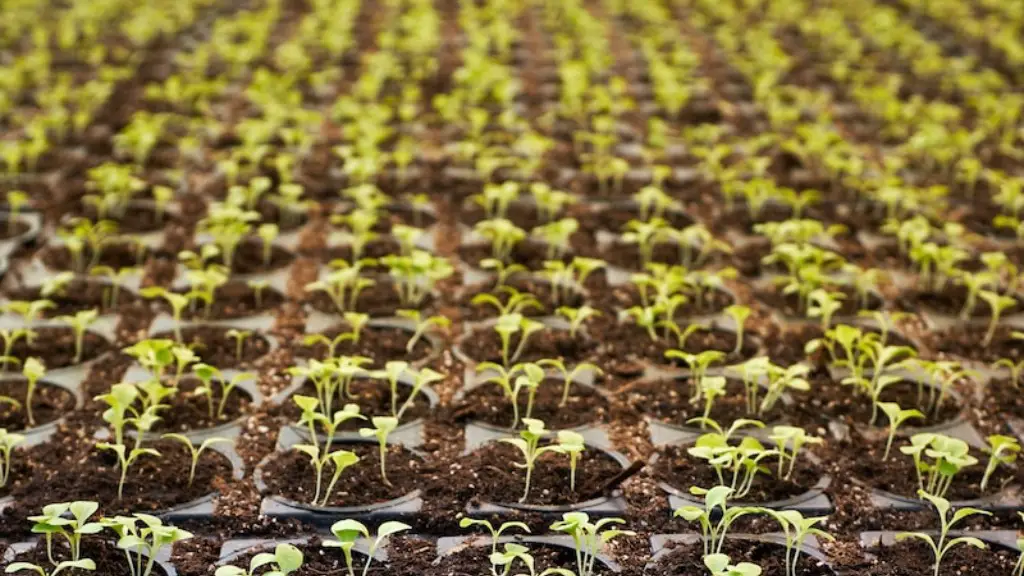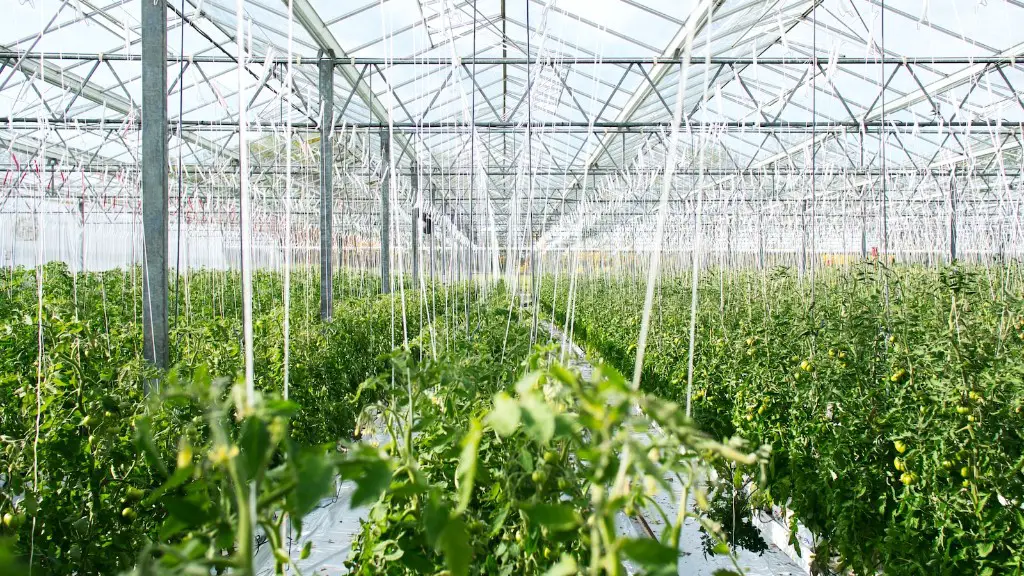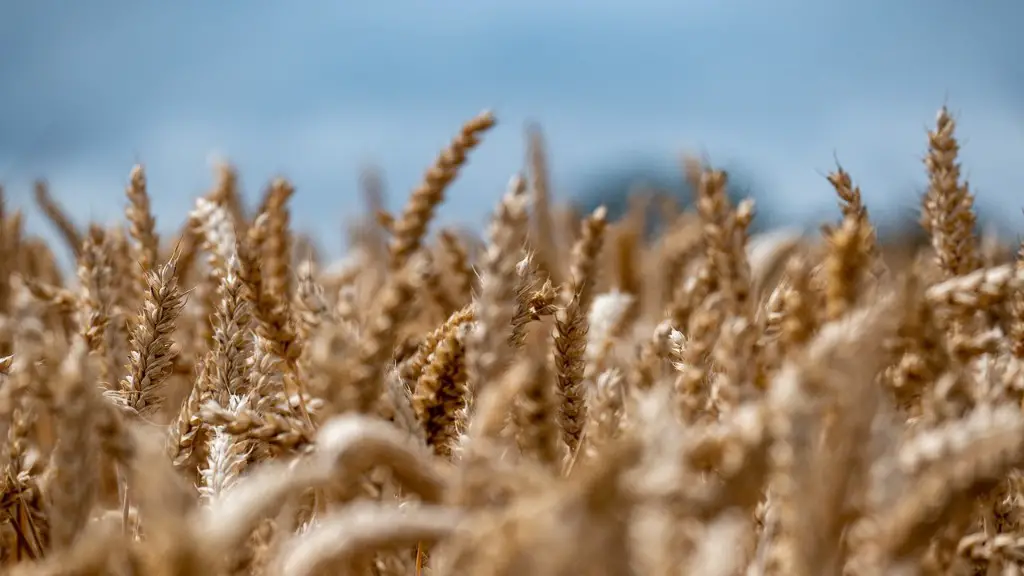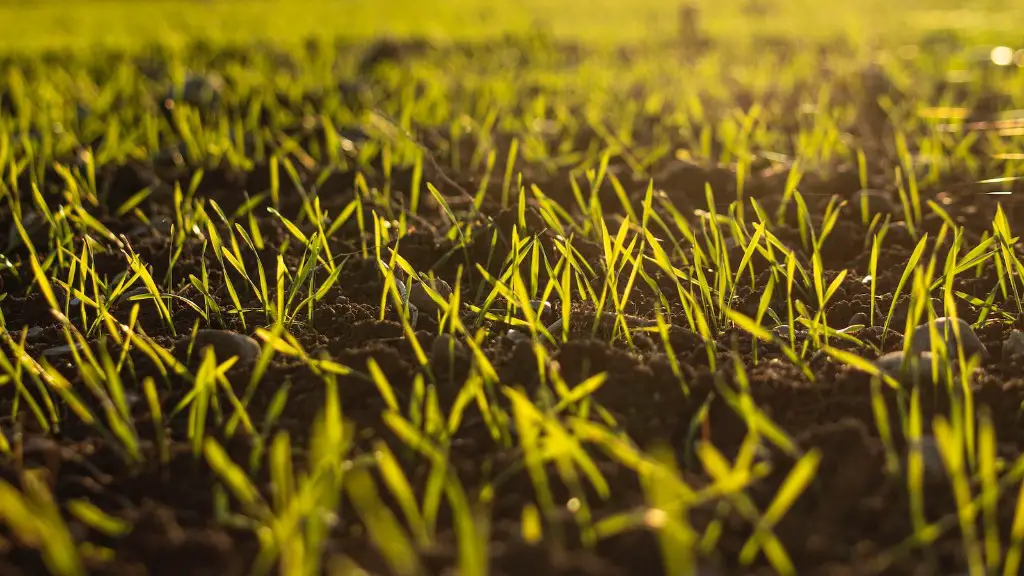The agriculture industry is a significant contributor to greenhouse gas emissions. In fact, the agriculture sector is responsible for about 10 percent of all greenhouse gas emissions in the United States. There are a number of ways to reduce greenhouse gas emissions from agriculture, and each farm is unique so the best method may vary. Here are a few options for reducing greenhouse gas emissions in agriculture:
– manure management: Manure releases methane, a powerful greenhouse gas, into the atmosphere. Methane emissions from manure can be reduced by using manure as a fertilizer, instead of letting it decompose in the open air.
– livestock management: Methane emissions from livestock are a significant source of greenhouse gas emissions from agriculture. Reducing methane emissions from livestock can be done by changing livestock diets, and by using methane digesters to capture methane gas and convert it into electricity or thermal energy.
– crop management: Crop management practices such as no-till farming, cover crops, and agroforestry can all help to reduce greenhouse gas emissions from agriculture.
There are a few ways to reduce greenhouse gas emissions in agriculture:
-Efficient irrigation techniques can reduce water use and the amount of methane produced from decomposing wet organic matter.
-Reducing the amount of animal waste produced by using manure management practices that prevent methane emissions.
– Growing cover crops and using crop rotations can increase soil organic matter, which can help to sequester carbon dioxide.
– Planting trees can also help to sequester carbon dioxide
How can we reduce greenhouse gases from agriculture?
Livestock feed additives can help reduce agricultural greenhouse gas emissions by reducing methane released from enteric fermentation. Rotational grazing can also help sequester carbon in the soil. High quality feed can help reduce methane production from enteric fermentation, and manure management can help reduce methane and nitrous oxide emissions from manure storage facilities.
No-till farming is a more sustainable technique that reduces the amount of greenhouse gas emissions. This type of farming reduces the number of times equipment crosses the fields, which reduces the amount of fuel used and the emissions produced. Animal-raising techniques that include rotational grazing, deep-bedding animals and composting manure are also more sustainable and reduce the amount of greenhouse gas emissions. These techniques help to keep the animals healthy and reduce the amount of methane produced by the animals.
What are 5 ways to reduce greenhouse gases
Greenhouse gas emissions are a major concern for the environment. There are a number of things you can do to help reduce emissions at home.
One way is to get a home energy audit. This will help you identify areas where you can make changes to reduce energy consumption.
Another way is to use renewable energy. This can be done by installing solar panels or wind turbines.
You can also purchase green tags or carbon offsets. These help to offset the emissions from your home.
You can also adjust your thermostat to use less energy. And, install solar lights and energy-saving light bulbs.
Farmers are on the front lines of climate change, and they are uniquely positioned to help mitigate its effects. Here are 10 ways farmers can fight climate change:
1. Efficient irrigation management can help reduce water waste and lower greenhouse gas emissions.
2. Renewable energy sources like solar and wind can help power farms and reduce reliance on fossil fuels.
3. Organic farming practices can help improve soil health and reduce carbon emissions.
4. Keeping agricultural lands green through cover crops and other vegetation can help sequester carbon and reduce soil erosion.
5. Reducing methane emissions from livestock through pasture-based management can help lower greenhouse gas emissions.
6. Protecting farmland from development and urban sprawl can help keep agricultural lands in production and reduce carbon emissions from land-use change.
7. Supporting policies that incentivize climate-friendly farming practices can help encourage farmers to adopt mitigation measures.
8. Engaging in carbon offset programs can help farmers offset their emissions and support climate mitigation efforts.
9. Communicating about the impacts of climate change and the importance of mitigation can help raise awareness and build support for action.
10. Working together to address climate change can help farmers build resilience
What causes greenhouse gases in agriculture?
Farming practices are a significant source of methane and nitrous oxide emissions – two powerful greenhouse gases. Methane is produced by livestock during digestion due to enteric fermentation and is released via belches. Methane can also escape from stored manure and organic waste in landfills. Nitrous oxide is emitted from soil as a result of agricultural activities such as fertilizer use, animal waste management, and crop residue burning.
Eating more vegetables, fruits, whole grains, legumes, nuts, and seeds, and less meat and dairy, can significantly lower your environmental impact. Producing plant-based foods generally results in fewer greenhouse gas emissions and requires less energy, land, and water. Animal agriculture is one of the leading causes of climate change, so by eating less meat and dairy, you can make a big difference for the environment.
What 5 things can we do to improve agriculture?
Mark Jones is an agricultural economist and the Director of the Center for Agricultural and Rural Development at Iowa State University. He is an expert on crop productivity and has written extensively on the topic. In this article, he outlines six ways to increase crop yields.
1. Develop high-yield crops: This can be done through breeding or genetic modification.
2. Boost irrigation: Increasing the amount of water available to crops can boost yields.
3. Increase the use of fertilizers: Properly applied fertilizers can increase yields.
4. Improve market access, regulations, and governance: Make it easier for farmers to sell their crops and get them to markets, and remove obstacles to productivity.
5. Make better use of information technology: Technology can help farmers increase yields by improving seed selection, irrigation, and fertilization.
6. Adopt genetically modified (GM) crops: GM crops have the potential to yield more than traditional crops.
Climate change mitigation agriculture can take multiple forms, including reducing deforestation, planting trees, and increasing soil carbon sequestration. Agricultural production can also be increased to create biofuels which would help to Substitute for fossil fuels and reduce greenhouse gas emissions from multiple sectors. These are just a few examples of climate change mitigation methods that can be taken at the agricultural level.
How can we control greenhouse effect
Following are the methods to prevent the greenhouse effect:
-Afforestation: Afforestation on a large scale helps in decreasing the release of carbon dioxide in the atmosphere.
-Conservation of energy: Switching to renewable sources of energy such as solar energy, wind energy, etc will reduce the use of fossil fuels.
Sustainable heating in greenhouse horticulture can help reduce methane emissions from livestock through improved processing of manure. Carbon storage in soil and vegetation through pilot programmes for climate-friendly land use can also help reduce emissions. Incentives for climate-friendly food consumption and reducing food waste can help to further reduce emissions.
What are 4 ways farmers can adapt to climate change and generate income?
There are a number of things that can be done in order to make pasture and livestock management more sustainable. One is to invest in more efficient water usage, including irrigation practices. Another is to test new technologies that help boost farming efficiencies. Finally, measures can be taken to reduce methane emissions from livestock, such as changing livestock feed or using methane digesters.
There is no one-size-fits-all solution to the problem of agricultural pollution, but we all need to play our part in tackling the issue. Farmers have a critical role to play in protecting our environment and helping to tackle climate change, by locking carbon into soils. Soils are a vital part of the carbon cycle, and by managing them responsibly we can help to mitigate climate change. But agricultural pollution is a complex issue, and we need to consider the full range of options available to us to find the best way forward. We’re keen to hear your views on this issue, and on the choices we all need to make to help tackle it.
What are some climate smart agriculture practices
Farmers can play a big role in mitigating climate change through the choices they make about their land and how they manage it. There are a number of mitigation practices that farmers can choose from, including tree planting/agroforestry, easy to assemble energy saving stoves, tree conservation and restoration, and beekeeping. Each of these practices can help to sequester carbon, reduce emissions, and/or promote other environmentally friendly practices that can help to mitigate the effects of climate change.
Agricultural production is responsible for a significant portion of global greenhouse gas emissions. The majority of these emissions come from three main sources: carbon dioxide (CO2) from tropical deforestation, methane (CH4) from livestock and rice production, and nitrous oxide (N2O) from fertilizing or burning croplands.
CO2 emissions from tropical deforestation are a major contributor to climate change, accounting for around 10% of all anthropogenic greenhouse gas emissions. Deforestation in the tropics is often caused by slash-and-burn agriculture, which releases large amounts of CO2 into the atmosphere.
Methane emissions from livestock and rice production are also significant, accounting for around 25% of all agricultural greenhouse gas emissions. Methane is a powerful greenhouse gas, with a global warming potential that is around 25 times greater than that of CO2. Methane emissions from livestock come from Enteric Fermentation, while rice production is a significant source of methane due to the use of flooded paddies.
Nitrous oxide emissions from fertilizing or burning croplands are the third major source of agricultural greenhouse gas emissions, accounting for around 5% of all agricultural emissions. Nitrous oxide is a powerful greenhouse gas, with a global warming potential
What is the largest greenhouse gas from agriculture?
Methane emissions are a major problem for the environment, as they are one of the biggest contributors to agricultural greenhouse gases globally. The main source of methane emissions is from livestock, such as cows belching. Methane is a very potent greenhouse gas, and it is important to take measures to reduce these emissions. There are a number of ways to do this, such as changing livestock diets, upgrading manure management systems, and developing new methane-reducing technologies.
The 4-Step Plan for Cutting Value-Chain Emissions:
1. Assess the entire value chain
2. Move beyond disclosure to set targets and achieve GHG reductions
3. Increase supply chain engagement and cooperation
4. Innovation
Final Words
1. Agricultural production accounts for a significant portion of global greenhouse gas emissions. Reducing these emissions is essential to addressing climate change.
2. There are a number of ways to reduce greenhouse gas emissions from agriculture. One is to increase efficiency in agricultural production. This can be done through better irrigation, fertilizer application, and crop management practices.
3. Another way to reduce agricultural greenhouse gas emissions is to shift to lower-emitting agriculture production systems. For example, organic agriculture has been shown to have lower emissions than conventional agriculture.
4. Finally, it is important to support research and development of agricultural practices and technologies that can further reduce greenhouse gas emissions. This includes innovations in renewable energy, precision agriculture, and agricultural waste management.
There are various ways to reduce greenhouse gas emissions in agriculture. Some of the most common methods include: no-till or low-tillage farming, using cover crops, using crop rotation, and using manure instead of synthetic fertilizers. Each of these methods can significantly reduce the amount of greenhouse gases emitted by agricultural activities.





